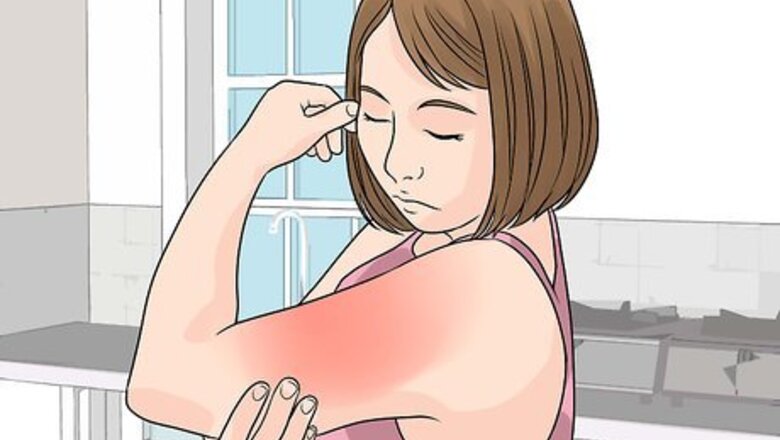
views
Determining the Severity of Your Burn
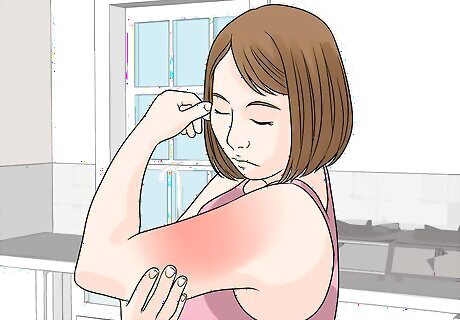
Evaluate a first-degree burn. First degree burns are the least severe. They are characterized by redness, swelling, and mild to moderate pain. First-degree burns are very common, and they are the result of brief contact with something hot (such as a stove, hot pan, or the sun). First-degree burns affect only the outermost layer of skin, and can usually be treated at home. Symptoms to look for include: Red skin that is painful to touch. Skin that tingles. Skin that is dry to the touch. Slight swelling. Very severe sunburn or any first-degree burn that covers a large area of your body should be looked at by a doctor.
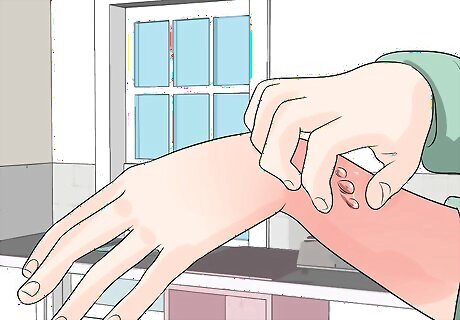
Identify a second-degree burn. Second-degree burns also damage the layer under the top layer of skin. These burns result from more extended contact with hot items or prolonged sun exposure. Many second-degree burns can still be treated at home. In addition to the symptoms of first-degree burns, characteristics of second-degree burns include: blotchy skin, blisters, and mild to severe pain. However, you should seek medical attention right away if: Your second-degree burn is on your hands, feet, groin, or face. Your burn results in severe blisters. The second-degree burn covers large portions of your body.
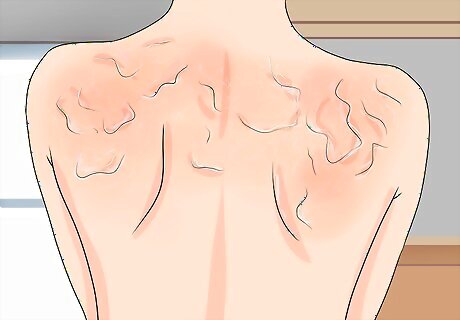
Determine if you have a third-degree burn. Third-degree burns destroy both the outer and inner layer of skin. These burns may or may not cause a lot of pain, but pain during recovery is usually more severe than with less severe burns. Third-degree burns occur when a heat source penetrates multiple layers of your skin. These burns are serious, and should not be treated at home. If you experience a third-degree burn, it is crucial for you to get to a hospital as soon as possible. Symptoms you may notice include: Red or white skin. Color that is unaffected when pressure is applied. Lack of blistering. Destroyed tissue. Third-degree burns are incredibly susceptible to infection. It is important that you do not touch or attempt to treat your third degree burn. Instead, seek medical attention immediately.
Seek treatment immediately for fourth degree burns. Fourth degree burns are very serious, and most likely a person who has one will be in shock. These burns destroy both the skin layers and underlying tissues, such as muscles and tendons. These burns are an emergency situation that requires immediate medical treatment. It's likely the person won't initially feel pain, as they will be in shock. Later, their recovery will be more painful.
Disinfecting and Protecting the Burn
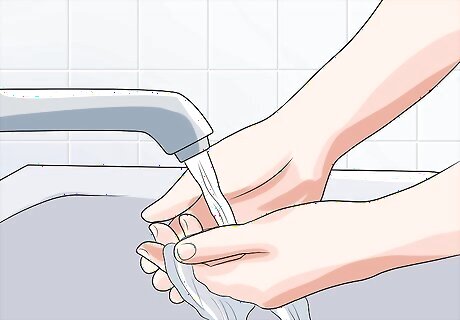
Wash your hands. Wet your hands with hot water, and apply soap. Rub your hands together, making sure to wash the tops and bottoms of your palms, all of your fingers, and your wrists. Rinse your hands with warm water. There is no need to use antibacterial soap. Any soap works just as well.
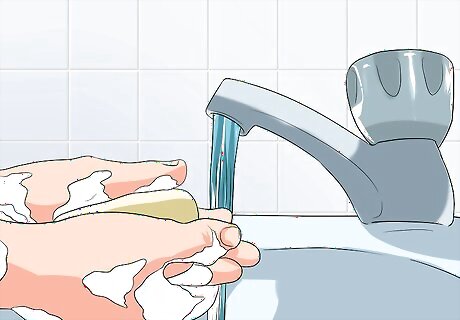
Clean the burn with soap and water. Run your burn under cold water to help cool the skin and reduce any pain. Apply a small amount of soap to the area, and gently move it around. Rinse the burn in lukewarm water, and gently pat it dry with a clean towel. Washing your burn with soap and water can help prevent a serious infection. Any type of soap can work for this purpose. If possible, opt for unscented soaps to reduce irritation. The soap does not need to be antibacterial. It is important to remove any jewelry that may be constricting blood flow to the area of the burn prior to washing.

Apply antibiotic ointment. Apply a thin layer of antibiotic ointment (such as Neosporin) to the affected area. Antibiotic ointment can help to further prevent infection, while keeping the skin moist.
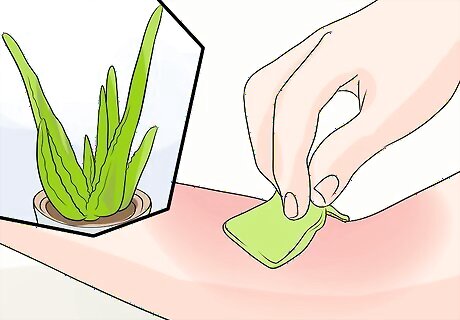
Apply aloe vera. If you are experiencing pain, apply aloe vera to soothe your skin, but only if you have a first or second degree burn. Just a thin layer of aloe vera gel, or aloe vera taken directly from an aloe plant, can help ease your discomfort. You can also take ibuprofen or other over-the-counter anti-inflammatory medications to reduce pain and swelling.
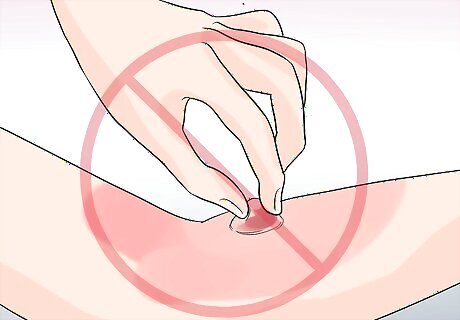
Do not break blisters open. Open blisters are prone to infection. Your body will heal burn blisters in time. Do not break or pop any blister that results from a burn, as the blister protects and keeps the wound sterile. If a blister should break on its own, thoroughly cleanse the area with soap and water.
Dressing the Burn with Gauze
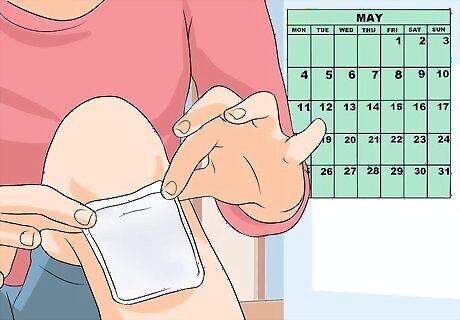
Determine whether or not you should use gauze. If your burn is first-degree and there are no broken blisters or open skin, you probably don’t need to apply a bandage. If you do have broken/exposed skin, or you have a second-degree burn, you should use a clean, sterile gauze wrap to prevent infection.
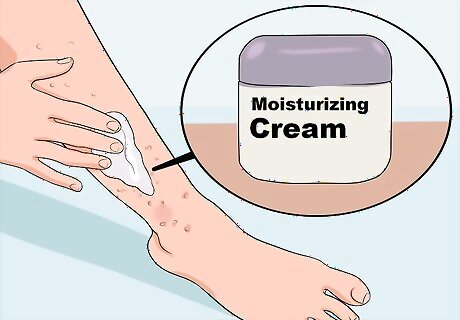
Apply a layer of ointment. As your burn heals, you will develop a new layer of skin. To prevent this new skin from sticking to your gauze bandage, it is important to always apply a thin layer or ointment between your skin and the gauze. You can use either antibiotic ointment, aloe vera gel, or a specially formulated burn ointment for this purpose. The ointment functions as a lubricating barrier between the burn and the gauze, so any of these ointments will work fine. The ointment need not contain antibiotics to be effective.
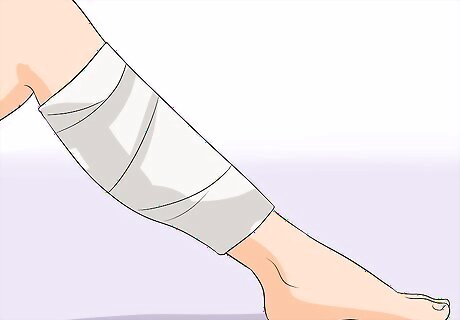
Dress the burn with gauze. After you apply the ointment, lightly cover the burn with 2-3 layers of gauze. Use medical tape to carefully keep the gauze in place. Be careful not to make the dressing too loose or too tight. Do your best to keep the bandage dry. You can place a plastic bag over your bandage for bathing. If you get your bandage wet or dirty, change the gauze.
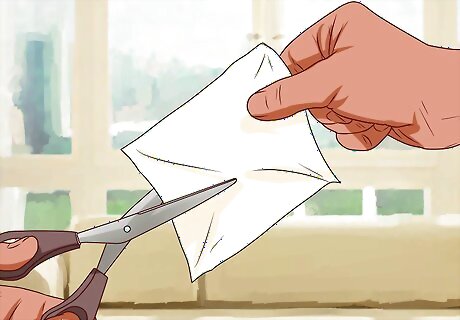
Change the dressing 2 to 3 times daily. Around the same time every day, gently remove the gauze. Apply fresh ointment, and wrap the burn in a fresh dressing. If the gauze is sticking to the wound, dampen the gauze with sterile saline solution, and carefully remove it without damaging the skin underneath.




















Comments
0 comment